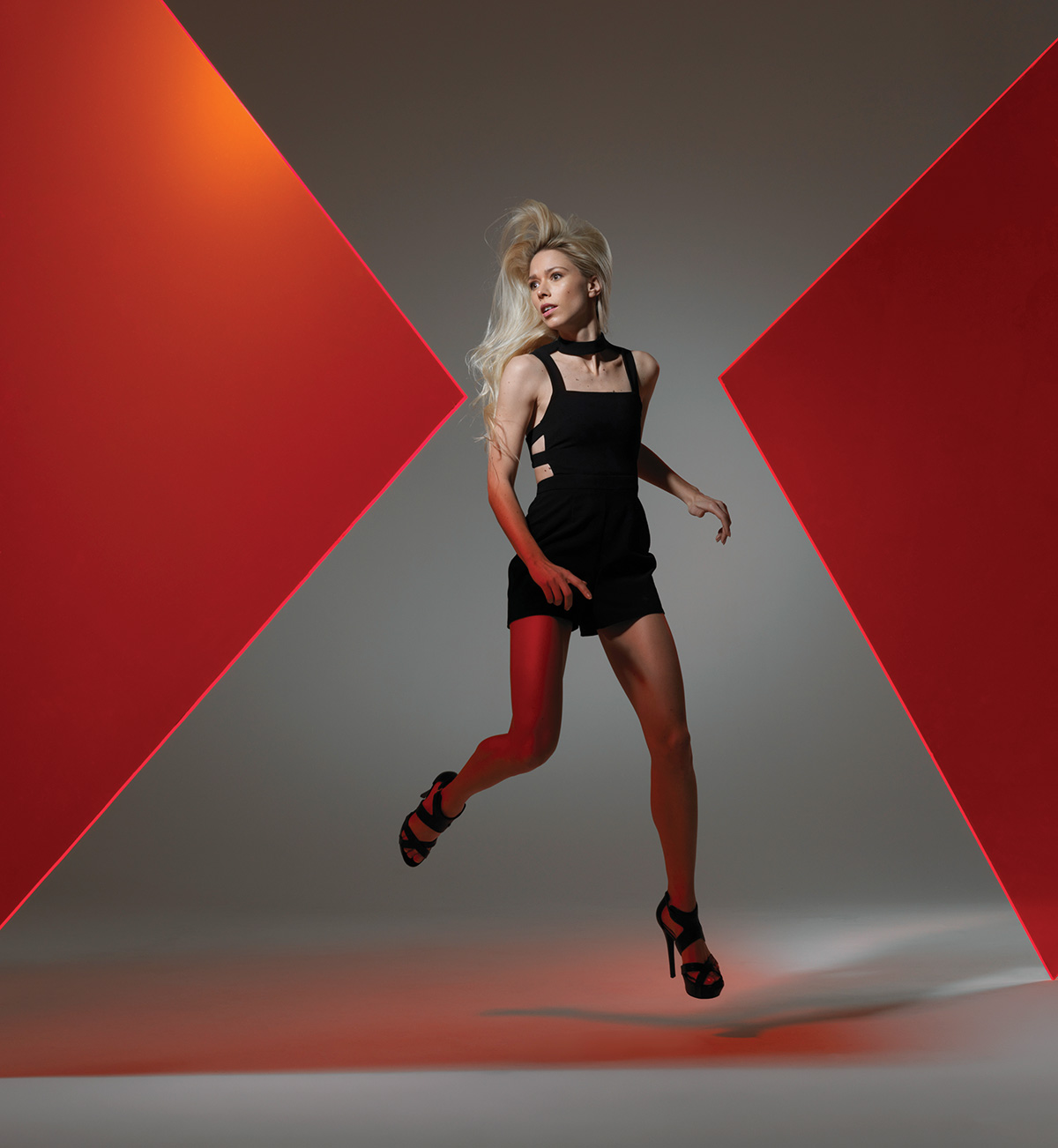Knowledge is Power
Karl Taylor reinvigorates his creativity and his career by becoming an educator.
• July 2021 issue
Since the founding of his studio in 1997, Karl Taylor has endeavored to balance creativity and commercialism. Like photographers everywhere, he sometimes struggles to be creatively inspired on demand while satisfying a client’s requirements. And like photographers everywhere, the struggle for Taylor is real.
Taylor runs a successful commercial studio on the island of Guernsey off France’s Normandy coast. The autonomous British protectorate enjoys a special tax status that attracts a range of companies, many of which Taylor has been able to court for a mix of advertising, beauty, and fashion work. Those projects have led to bigger accounts, with jobs in London and other locations throughout Europe.
Taylor was enjoying being sought-after and busy; business was good. But after a while, things started to get, well, stale. He’d be hired over and over for the same kind of project, with everything meticulously dictated by an art director. By the mid-2000s, he was starting to resent the artform he loved.
To reignite his passion for image-making, he began looking for ways to engineer more satisfying projects attached to a business purpose. As much as he understood the value of doing personal work, it was difficult to carve out the time for elaborate projects while running a busy commercial studio.


I appreciate why a lot of photographers feel like they are in a rut, says Taylor. “What I should have done was shoot more personal work to get myself out of that rut. The problem is, when you’re running a business 7 a.m. to 7 p.m. six days a week, your time and energy to shoot for yourself is very limited.”
Taylor realized he needed a financial driver to try new things. That driver came when he was inspired to start an educational platform. The idea was to stage fun, inventive photo shoots, film detailed how-to videos, and create a series of interactive lessons. The platform, Karl Taylor Education, grew quickly in popularity and became an important revenue stream for Taylor’s studio.
It also became the catalyst for Taylor to start enjoying photography again. He threw himself into the work and the requisite research. He studied the science of light. He learned the biology and psychology of human visual perception. He dove into portraying mood with light, shade, and color. His enthusiasm for the art and craft of photography improved, and so did the overall standard of his work.
The educational program has been the savior of my creativity because it has given me the freedom to shoot the images I want to shoot,” says Taylor. “My work improved, my portfolio improved, and it has led to other commercial work that has been more interesting.”
SEEING THE LIGHT
Of all the topics he covers, Taylor sees the biggest need for advanced lighting education. “Even many experienced pros don’t understand the real fundamentals of lighting, the complexity of light modifiers, the physics behind lighting,” says Taylor. “That was where I was 15 years ago. I thought I knew these things because I could do basic portrait lighting and set up a soft box. But when people learn some of these more advanced techniques, they feel like they’ve opened their eyes to a new level of photography.”
Good photographic lighting entails more than understanding how light works; it also requires an understanding of the emotion that lighting scenarios portray, explains Taylor. How the lighting sculpts, forms, or informs the emotional elements of an image is what helps drive a photograph’s narrative. Then light becomes more than a way to illuminate a scene; it becomes the determining factor of the image and how the viewer perceives the people or objects in it.
For photographers looking to improve their lighting skills, Taylor recommends starting with observation. Look at the images around you. View the work of photographers you admire. Try to break down the images and figure out how they were created.
Next, study the elementary physical properties of light. Master the inverse square law and how it affects studio lighting. Learn how light can be changed by various modifiers and how the effects can differ depending on the subject’s surface texture. There are subtleties that many photographers may overlook, like the differences between a Fresnel lens and a honeycomb modifier, which are very noticeable on some surfaces, like skin, but not as pronounced on others. Or how a concave mirror can produce a focused ball of light in a specific place to achieve a specific effect. If you understand the physics of light, these subtleties are easy to understand and manipulate to your purposes.


With that baseline of knowledge, Taylor urges photographers to examine images from an emotional perspective. “We have imprinting based on the human condition for why certain lighting has certain moods associated with it,” he says. The direction of light and the way light is modified or reflected affect the emotions of a scene. For example, lighting from below and shining up on a subject is an unnatural look that runs counter to our perception of natural light patterns. It portrays a sense of unease that makes it work well for horror movies and frightening imagery.
By studying other artists and other genres, you can understand better the emotional aspect of lighting,” says Taylor. “First, understand the tools, and then understand the emotion behind the use of those tools. If you can do this, then you can create images that depict very specific emotions. It’s all about matching the lighting to the narrative and then knowing how, when, and why to do it.”
Taylor points out that when you learn these techniques, you feel better equipped to tackle any project. “Many photographers chase clients to get jobs and then panic because they don’t know how to make the image,” says Taylor. “When you know exactly how you’re going to create a shot, it gives you the confidence to take on any project.
As in any industry, knowledge is power. Taylor’s objective is to share knowledge with fellow photographers so they can acquire the same level of confidence in their work. That confidence can open many doors, but the underlying skillset can also provide an express lane to inspiration. The more you’re able to accomplish, the more complex and challenging projects you’re able to take on. And that’s what keeps the work both interesting and financially rewarding.
Jeff Kent is editor-at-large.


 View Gallery
View Gallery
